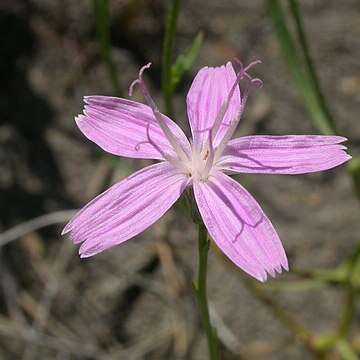Glabrous colonial perennial from deep-seated creeping roots; stem 1.5–6 dm, grooved-striate, much branched; lvs all alternate, linear, to 4 cm × 3 mm, the upper reduced to subulate scales; heads terminating the branches; invol 10–16 mm, with 4–8 (chiefly 5) principal bracts; fls (4)5(–10), the ligule pink (white), spreading, mostly 10–12 × 4 mm; achenes columnar, several-nerved; 2n=18. Prairies and other dry, open places, often in sandy soil; Minn. to Ark., w. to Man., B.C., and Ariz. June–Sept.
A herb.

